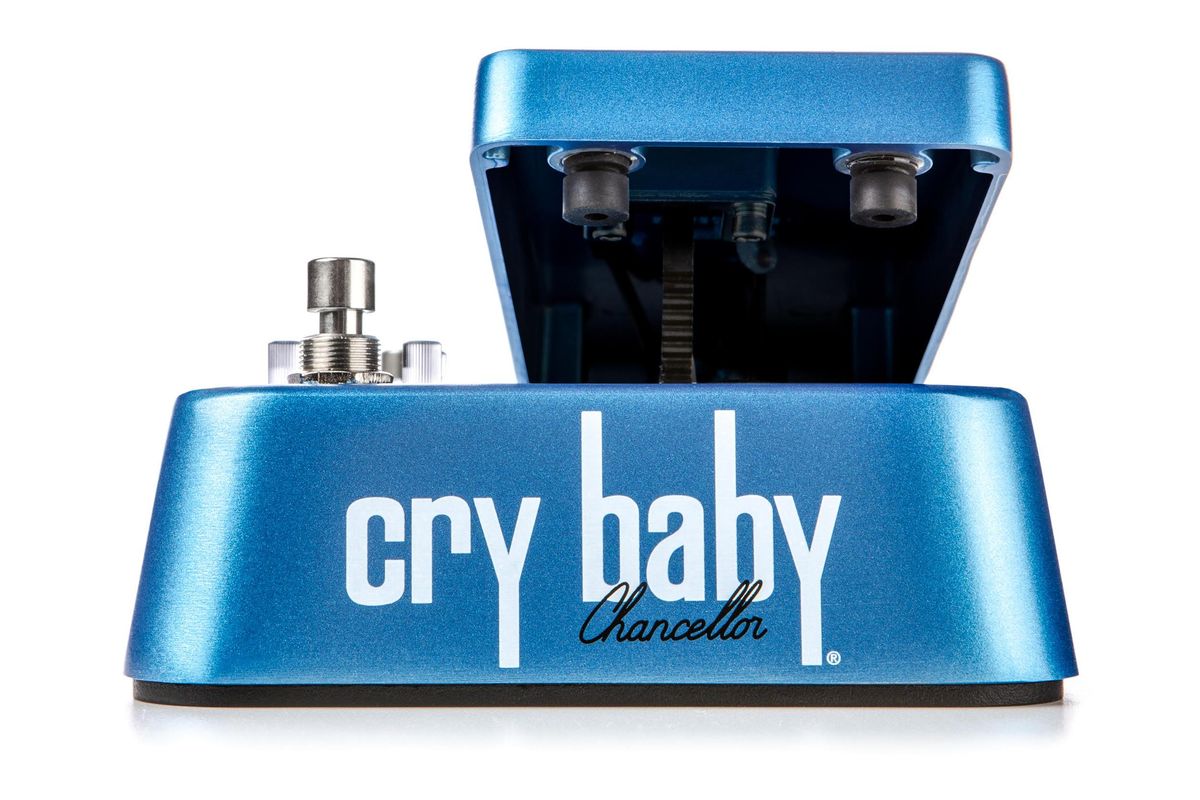Options for self-expression through pedals are almost endless these days. It’s almost hard to imagine a sonic void that can’t be filled by a single pedal or some combination of them. But when I told bass-playing colleagues about the new Dunlop Justin Chancellor Cry Baby—which combines wah and fuzz tuned specifically for bass—the reaction was universal curiosity and marvel. It seems Dunlop is scratching an itch bass players have been feeling for quite some time.
Triple Threat
To call the Justin Chancellor Cry Baby a two-in-one doesn’t do the pedal justice, simply because the difference between the two filter effects is so distinct. The first filter, called “Wah,” is a traditional wah that uses the red Fasel inductor circuitry of a modified Cry Baby. The second filter, designated “U.K.,” lives in the same sonic ballpark as the filter in Chancellor’s older, British-made, Wal basses. This filter sounds drastically different than the standard wah filter and is more reminiscent of a traditional envelope filter.
Both filters have dedicated controls for volume and Q. Q adjusts the bandwidth and intensity of the filter peak. You switch between the filters using a large footswitch on the very top of the pedal. The fuzz controls occupy the lower half of the pedal’s right side, and consist of fuzz, tone, and volume. The bypass switch for the fuzz is at the very bottom of the pedal and an additional “pedal topper” cap is included so you can make the switch slightly taller and activate it with your heel without taking your toe off the wah treadle. Dunlop says this was an important feature on Justin’s wish list. The kick switch on the right side of the pedal, meanwhile, enables use of the fuzz independent of the wah. One last very cool and useful feature is a small control for bypass delay that allows you to extend or decrease the time that the effect rings out when you move the treadle to the heel position.
Even at the toppiest settings, the fuzz retained a flexible vintage feel and never became too harsh.
Heavy Package, Heavy Tones
Pedals are smaller and lighter in general these days, so the Chancellor Cry Baby’s well-built enclosure and spacious layout make it seem a little on the wide and heavy side. But for those of us who tend to get a bit excited or heavy handed (or heavy footed) while performing, the heft is reassuring. As shipped, the pedal’s adjustable treadle has a firm resistance that enhances control and ensures that there’s little chance of engaging the effect accidentally.
Plugging my ’84 Yamaha BB-3000S into the pedal with just the P-pickup engaged, I started my test by employing the fuzz exclusively. It’s based on Chancellor’s old Colorsound Tone Bender, and sounds great without any help from the wah. I tended to dial back the top end in the fuzz signal slightly to accommodate my aggressive approach and new steel strings, but I felt that many of the brighter fuzz settings would pair wonderfully with a bass strung with flatwounds. Even at the toppiest settings, the fuzz retained a flexible vintage feel and never became too harsh. As with any fuzz or distortion, going direct into a desk or interface can yield some harshness. I preferred the brighter settings through an amp simulator plug-in or an amp to soften the overtones ever so slightly.

New School Metal to Ol’ School Funk
When I think of bass wah, my mind goes to Tim Commerford and his work on the Audioslave albums. The Cry Baby-derived filter in this pedal shines in this type of heavy application. Even when I set the Q filter for a fairly narrow range to retain more warmth and low end, the pedal delivered an aggressive, rhythmic bite that inspired me to play in ways I normally would not. Opening up the Q filter, the J.C. wah delivered biting, aggressive tones that had plenty of attitude—even without the fuzz. The U.K. filter comes from a much different place than the wah filter. In U.K. filter mode I was usually moved to disengage the fuzz and explore the unique possibilities of shaping its very envelope filter-like sound with my foot rather than picking dynamics. The thicker low end and low-mid punch of the U.K. filter lent itself extremely well to both slap and rhythmic muted-pick playing.
The Verdict
There are lots of uncommon tone combinations in the Justin Chancellor Cry Baby pedal. And my informal panel of L.A.-based rock bass players that tested the pedal all remarked about how difficult it would have been to achieve the sounds in the Chancellor with a standard wah and fuzz pairing. Dunlop did more than just make a signature model pedal with a well-known player’s name on it. They assembled a set of features that many bass players didn’t even know they needed. And while the feature-rich design makes it expensive, the result is a pedal that’s bound to inspire.












![Devon Eisenbarger [Katy Perry] Rig Rundown](https://www.premierguitar.com/media-library/youtube.jpg?id=61774583&width=1245&height=700&quality=70&coordinates=0%2C0%2C0%2C0)




